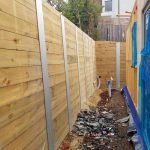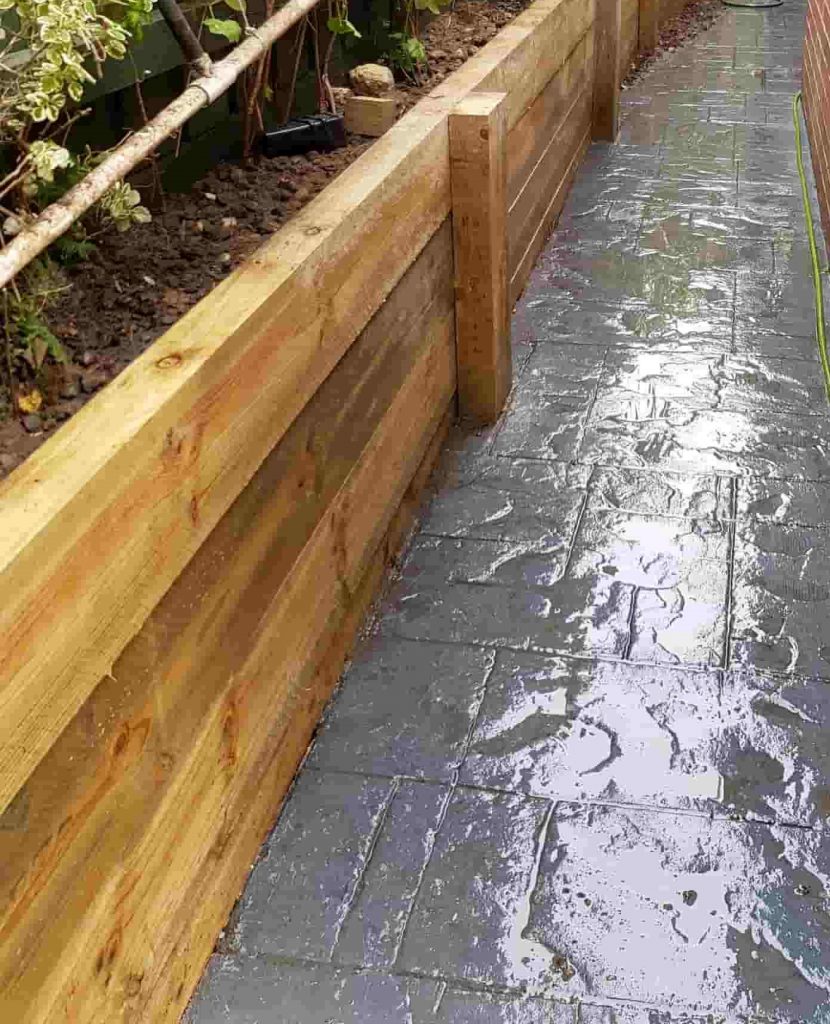Introduction
Retaining walls are more than mere structures; they embody the artistry of engineering and style. When we think about transforming our landscapes, keeping walls often function as pivotal aspects that not just support the ground however also boost the aesthetic appeal of our lawns. The journey from an initial idea to a perfectly developed retaining wall can be intimidating. Nevertheless, with the right knowledge and imagination from professional contractors, this vision can perfectly develop into reality. In this substantial guide, we'll check out every https://rentry.co/6d8ky2x7 element of working with innovative retaining wall builders, diving deep into materials like timber sleeper, concrete sleeper, and H beam constructions.
From Vision to Reality: Working with Imaginative Retaining Wall Builders
What Are Maintaining Walls?
Retaining walls are structures developed to hold back soil and avoid disintegration. They have a variety of applications, from landscaping visual appeals to vital structural integrity in sloping surfaces. These walls can be made from different products consisting of concrete, lumber, stone, and even gabions.
Why Choose Creative Retaining Wall Builders?
When it pertains to building a retaining wall, picking the right builder is essential. A creative contractor doesn't simply concentrate on functionality; they likewise consider how the structure will blend with your landscape. This makes sure that your vision is not only realized but elevated.
Understanding Different Kinds of Maintaining Walls
Gravity Walls
Gravity walls count on their weight to withstand soil pressure. Typically made from heavy materials like concrete or stone, these walls are uncomplicated but need considerable space.
Cantilever Walls
These walls make use of take advantage of for stability. They are normally made from enhanced concrete and work well for taller structures.

Anchored Walls
For situations where extra assistance is needed, anchored walls are ideal. They use cable televisions or rods anchored into the earth behind them to offer extra resistance.
Materials Utilized in Retaining Wall Construction
Timber Sleeper Walls
Timber sleeper retaining walls use a rustic appeal and are best for garden landscapes. Their natural appearance mixes wonderfully with outside settings.
- Advantages: Budget friendly and easy to install. Disadvantages: Susceptible to rot if not treated properly.
Concrete Sleeper Walls
Concrete sleeper walls supply sturdiness and strength. These precast panels been available in different designs and colors, allowing for customization.
- Advantages: Long-lasting and low maintenance. Disadvantages: Higher upfront cost compared to timber.
H Beam Walls
H beam retaining walls combine modern engineering with visual appeal. H beams offer exceptional stability while allowing for imaginative designs.
- Advantages: Stronger than traditional materials. Disadvantages: Needs professional setup due to complexity.
The Style Process: From Conceptualization to Implementation
Initial Assessment with Your Builder
The first step in building your retaining wall includes an initial assessment where you share your vision. This is where imaginative contractors shine; they'll listen thoroughly to your concepts and recommend useful solutions based on their experience.
Site Evaluation and Recommendations
A professional contractor will perform a thorough website evaluation before any construction starts. They'll evaluate soil conditions, drain patterns, and other aspects that might impact the task's success.
Designing Your Maintaining Wall
Once assessment information are collected, the style phase starts. Anticipate discussions around material options-- whether you prefer wood sleepers for a rustic appearance or concrete sleepers for durability-- and how these options will affect both budget plan and aesthetics.
Building Regulations and Permits
Understanding Regional Building Codes
Before building and construction begins, it's essential to understand regional building codes regarding retaining wall construction. Many locations have specific guidelines worrying height limitations, problem requirements from residential or commercial property lines, and drains systems.
Acquiring Necessary Permits
Professional contractors usually deal with authorizations as part of their service bundle. However, it's still excellent practice for property owners to acquaint themselves with what licenses may be required for their project.
Construction Phase: Bringing Your Vision to Life
Preparing the Site
This involves clearing plants and debris from the construction area while ensuring minimal disturbance to surrounding environments-- an essential stage managed efficiently by professional builders.
Foundation Work
A strong structure is essential when constructing any retaining wall type; this action varies based upon picked materials (concrete sleepers versus timber). Home builders make sure that footings fulfill engineering standards before progressing further.

Wall Assembly Techniques
Different methods use depending upon material choice:
- For wood sleepers: Appropriate anchoring strategies need to be used. For concrete sleepers: Setup requires lifting devices due to weight. H beam setup necessitates accurate alignment for structural integrity.
Finishing Touches That Make a Difference
Landscaping Around Your Maintaining Wall
After building and construction is complete, consider landscaping alternatives around your brand-new wall. Plants can soften its look while improving drainage-- developing an inviting atmosphere in your yard!
Maintenance Tips for Longevity
To guarantee your retaining wall lasts through seasons:
Regularly check for fractures or indications of wear. Clean any particles accumulation around drainage areas. Add soil or mulch regularly as required for stability versus disintegration pressures over time.FAQs About Dealing with Creative Retaining Wall Builders
What Is The Average Expense Of Building A Keeping Wall?
Costs can vary significantly based upon products utilized (timber vs concrete) along with style complexities-- generally varying from $15-$50 per square foot depending largely upon regional labor expenses as well!
How Long Will It Require To Build A Keeping Wall?
Typically speaking-- most projects take anywhere between 1 week-- 1 month depending upon size/scope involved! Larger projects require more time due too additional preparations needed beforehand so always speak with directly!
Can I Develop My Own Retaining Wall?
While do it yourself alternatives exist especially utilizing lighter products like woods-- more complex structures need specialists experienced in structural engineering best practices guaranteeing safety & & resilience throughout lifespan!
What Upkeep Does A Timber Sleeper Wall Require?
Timber sleeper walls need regular examination especially after heavy rains or snowmelt periods examining footing stability & & treating wood surfaces against rot/mold buildup stays important upkeep aspects!
Are There Eco-Friendly Options For Building A Retaining Wall?
Yes! Lots of companies now offer recycled products as alternatives including recovered wood items alongside sustainable sourcing practices promoting greener building methodologies overall!
Conclusion
Transforming your landscape through a perfectly constructed retaining wall doesn't have to be overwhelming when you deal with competent specialists who value both creative style concepts together with technical know-how! By understanding different types-- from wood sleepers & & concrete alternatives right down through ingenious h beam solutions-- you'll find exactly what suits best within customized visions turning dreams into concrete truths! So why wait? Start checking out how creative retaining wall contractors can help bring YOUR special outdoor goals alive today!